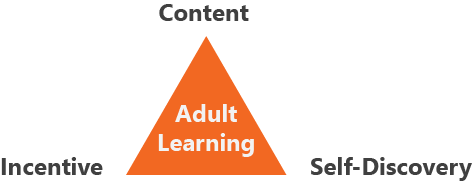6-minute read
Quick summary: A strategic approach to training strategy, execution, and documentation for ensuring long-term progress in knowledge, skills, abilities, and/or behaviors
In all organizations, it is well known that it is better to be proactive with strategy and resources than reactive. This is the difference between being forced by the environment into a decision and strategically positioning an organization to function effectively in furthering its mission. Over the last year, many changes occurred in the technology sector—from the public release of generative AI to right-sizing in headcount to advancements in machine learning and cloud computing. Each of these changes might require training if the business is to function effectively in the new environment.
So you want training. Whether it’s focused on implementing a new CRM system, improving your onboarding system to capture new organizational changes, or revamping your scaled career model, the first question we always ask ourselves is, “Is this a want or a need?” Training should always be attached to a need; otherwise we run the risk of redundancy or irrelevancy, leading to frustrated workers and wasting resources.
The first question we always ask ourselves is, “Is training a want or a need?
Identifying the need for training
So how do we answer that question and identify a need for training? Here’s a three-step process.
Step 1: Needs analysis
Start by determining the desired and necessary knowledge, skills, abilities, and/or behaviors (KSABs) for the job function, which can be done through a needs analysis.
Step 2: Needs assessment
While an analysis seeks to identify the KSABs required for the new function, the assessment focuses on the current level of KSABs in your talent pool. Run a needs assessment to identify gaps in your workforce between the current and desired future state for the required KSABs. Now you can identify which areas have a need for training.
Step 3: Alignment of measurements
For most KSAs, measurement is a clear-cut matter. But behaviors are another beast, and yet it is possible to measure them. Let’s say you want to make a push towards having a more emotionally intelligent organization. To measure it, one needs to select actual criteria associated with emotional quotient (EQ), then develop conceptual criteria for capturing data to reflect the markers. I know that’s a head-scratcher, but please bear with me. For instance, some markers of strong EQ are awareness and management of one’s own and others’ emotions. These could be considered actual criteria. Now, to capture these, we need to develop measures, conceptual criteria.
Let’s look at managing personal emotions. We can measure for how steadfast, patient, and focused workers tend to remain under stress. For managing others’ emotions, we can measure for listening skills, ability to influence in a positive direction, and skill to bring out the best performance in people. So, by measuring these conceptual criteria, as a byproduct we can inferentially capture the actual criteria for determining whether a person is strong in emotional intelligence.
(Note: I do want to add the caveat for this specific example how different cultural expressions of emotions must be taken into account. Just because someone might lean into their emotions doesn’t mean they don’t have EQ. This is about awareness and management, and it’s possible to do that in a heightened state or when it’s a positive and accepted cultural norm.)
Run a needs assessment to identify gaps in your workforce between the current and desired future state for the required KSABs.
Incorporating adult learning principles
Now that we’ve identified the training is a need, let’s move on to some theory.
Adults learn differently from kids. Research shows adult learners generally don’t like to accept training content when it’s simply shared information (e.g., best path forward, what is true, etc.); they prefer to self-discover the answers for themselves. This means training needs to have space for reflection so the adult learner can “discover,” and in doing so, learn from the content presented.
When it comes to content, it needs to be compelling, directly related to the training goals, and useful to the learners. If these connections can be articulated beforehand, trainers can increase the adult learner’s incentive to learn.
By increasing learner incentive, the odds will increase for the training content to land. Trainers can utilize a few strategies to do so:
- Doing it live and in-person
- Structuring the training to account for differing learning styles (e.g., narrative, quantitative/numerical, hands-on, social, etc.)
- Articulating how the learnings are tied to organizational objectives and how they will alleviate headaches
- Offering opportunities throughout the training to show knowledge gain
When all three of these elements—self-discovery, content, and incentive—are addressed at a satisfactory level, learning is maximized. A simple way to look at it is through our training triangle for adult learning:

Building a strategy: the ADDIE model
Finally, since we know the training is a need and we’ve considered some research to support our desired outcomes, we move on to practice. The model we use at Logic20/20 is the ADDIE model. I’ll list it here for your reference, but for documentation purposes, a standardized ADDIE model template associated with the overall organizational goals can help you stay proactive, strategically consider important questions surrounding training, and have documentation to point back to your training approach—so that when it’s time for evaluation, you have concrete information.A = Analysis
- Work through a needs analysis template.
- State gaps between what is and what is to be.
- Identify KSABs needed for the new state. Determine whether people need full-on trainings.
- Again, differentiate between a need and a want.
D = Design
- Establish an owner for the training process.
- Create a training bill of materials (BoM), a training timeline, and the type of system to be used (e.g., typically a learning management system (LMS) for KSAs, in-person instructor-led training (ILT) for behaviors).
- Create cards for each training detailing the title of the training, facilitator(s), objectives, outlines, etc.
- Determine the cadence for in-person instructor-led trainings.
D = Development
- Fill out training cards or deck templates with each of trainings.
- Take the information straight from the bill of materials.
I = Implementation
- Depending on your strategy, run a “train the trainers” workshop to ensure standardization.
- Communicate the training cadence and when offerings will be launched. Partner with internal communications and/or marketing to identify ways to get the word out.
- If not mandatory, offer incentives to join the trainings.
E = Evaluation
Remember that excellence lies in evaluation. Within organizations, I’ve heard it said, “You value what you measure.” Too often I have seen leaders get excited when an initiative lands— but then there isn’t analysis or evaluation of the outcomes from the change. By documenting the process through the ADDIE model, we set ourselves up for success to where we can ask these key questions:- Did learning actually take place?
- Surveys usually come out right after the training—too soon to determine whether it has resulted in actual learning.
- As an alternative, a mass e-mail or cascade strategy with people managers could go out a couple months after training and be used as a part of a quarterly performance check-in/review.
- Did we move the needle from our needs assessment numbers showing growth towards the new standards within the KSABs?
- Example: Conduct a survey three months after training asking, “Do you feel after training you’re able to perform at required level?” Have supervisors answer this, too.
- Can learners execute at level required?
A standardized ADDIE model template can help you stay proactive, strategically consider important questions surrounding training, and have documentation to point back to your training approach.
In summation, to maximize the impact of training, you want to measure ROI, training learned, etc. Training documentation can be built along the way. With a training strategy and documentation plan, you can ensure long-term progress towards the desired knowledge, skills, abilities, and behaviors.
P.S. A final warning: Beware the “four horsemen of training”: (1) only sharing information and considering that a “training,” (2) not attaching training to an actual need, (3) misaligning training to organization’s strategic objectives, and (4) boring your people!

Accelerate towards your operational goals
Let Logic20/20 help you achieve your business goals with proven expertise, deep knowledge of strategic methodologies, and a highly collaborative approach.

Nick Ravi-Johnson is a Senior Consultant in Logic20/20’s Strategy and Operations practice and holds an M.A. in Industrial and Organizational Psychology.

